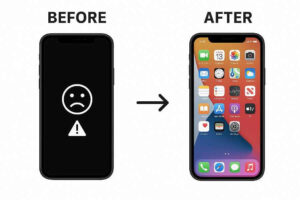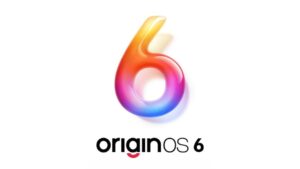Table of Contents
Android 16 Compatible Devices: Complete Device List & Requirements
The stable version of Android 16 has officially begun its rollout, starting with Google’s own Pixel devices and expanding to major Android manufacturers throughout 2025. As the latest OS version becomes available across the ecosystem, understanding which devices are compatible has become crucial for smartphone users planning their next upgrade or wondering if their current device will receive the update.
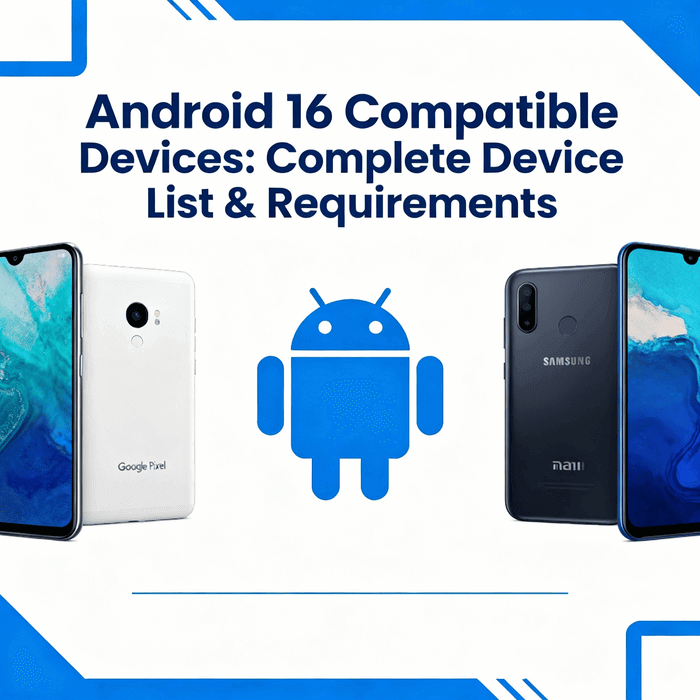
System Requirements for Android 16
Minimum Hardware Requirements
Starting with Android 16, Google has implemented stricter hardware requirements to ensure optimal performance and user experience. The most significant changes include:
RAM Requirements: Devices with 4GB of RAM that were able to run full Android 15 will now be required to use Android Go Edition with Android 16. This effectively establishes a minimum RAM requirement of 6GB for running full Android 16. Devices with 2GB and 3GB of RAM must continue using Android Go Edition, while those with less than 2GB of RAM cannot access Google Mobile Services at all.
Storage Requirements: Android 16 maintains the 32GB minimum internal storage requirement introduced with Android 15, doubling the previous 16GB limit. Google mandates that 75% of this storage must be allocated to the data partition, which houses user apps, data, and preinstalled system apps. Devices with less than 32GB of storage cannot upgrade to Android 16 and will be limited to using the open-source Android codebase without access to Google Play Services.
Source: Google Blog
Android 16 Minimum Hardware Requirements
| Component | Requirement | Notes |
|---|---|---|
| RAM (Full Android) | 6GB minimum | Devices with 4GB RAM must use Android Go |
| RAM (Android Go Edition) | 2-4GB (mandatory for 4GB devices) | Required for devices with 2-4GB RAM |
| RAM (No Google Services) | Less than 2GB | Cannot access Google Mobile Services |
| Internal Storage | 32GB minimum | Doubled from previous 16GB requirement |
| Data Partition Allocation | 75% of total storage | Reserved for apps and user data |
| Previous Android Version Support | Android 15 compatible | Must have run Android 15 successfully |
| Google Play Services Access | Requires minimum specs | Unavailable for sub-minimum spec devices |
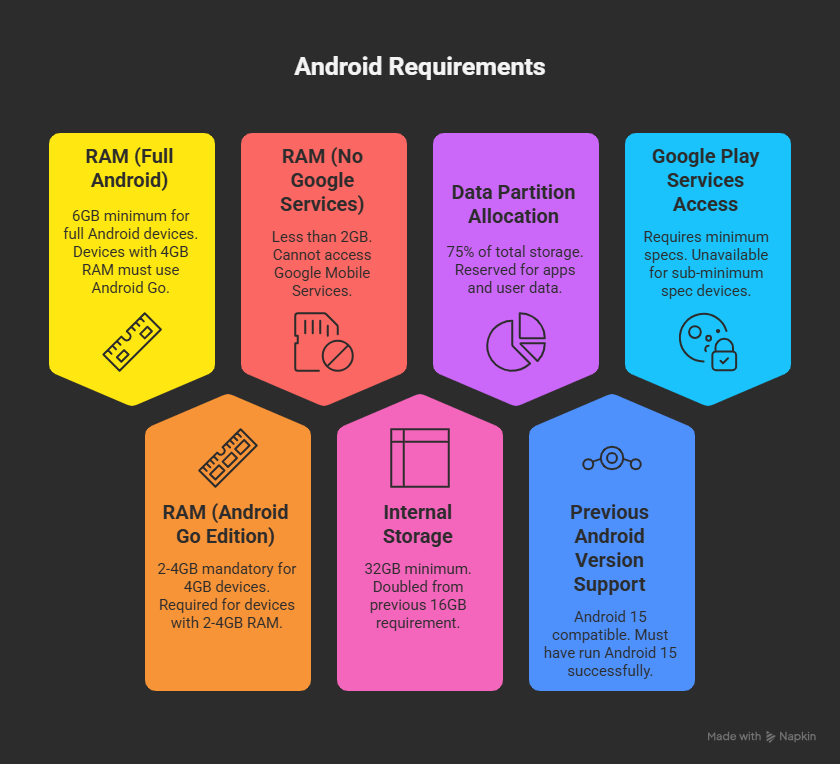
Google Pixel Devices with Android 16
Google Pixel devices are first in line for Android 16, with the rollout already underway for supported models. All Pixel devices from the Pixel 6 series onwards are eligible for the Android 16 update:

Pixel 9 Series: Pixel 9, 9 Pro, 9 Pro XL, 9 Pro Fold, 9a
Pixel 8 Series: Pixel 8, 8 Pro, 8a
Pixel 7 Series: Pixel 7, 7 Pro, 7a
Pixel 6 Series: Pixel 6, 6 Pro, 6a
Pixel Foldables: Pixel Fold
Pixel Tablet: Pixel Tablet
Samsung Galaxy Android 16 Eligible Devices
Samsung offers one of the most extensive Android 16 compatibility lists, with the company already rolling out One UI 8 based on Android 16 to multiple device categories. The rollout began in September 2025 with the Galaxy S25 series and has since expanded to include:
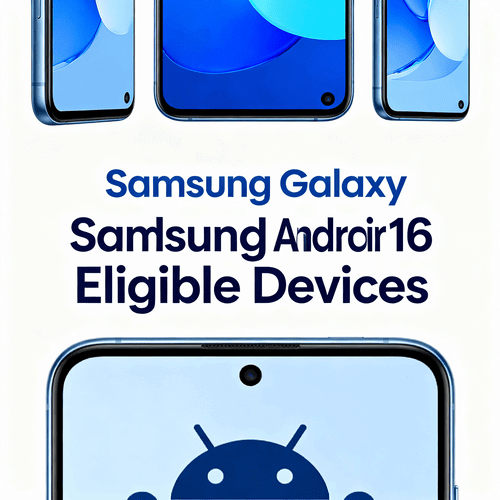
Galaxy S Series:
- Galaxy S25, S25+, S25 Ultra, S25 Edge
- Galaxy S24, S24+, S24 Ultra, S24 FE
- Galaxy S23, S23+, S23 Ultra, S23 FE
- Galaxy S22, S22+, S22 Ultra
- Galaxy S21 FE
Galaxy Z Foldables:
- Galaxy Z Fold 7, Z Flip 7 (pre-installed)
- Galaxy Z Fold 6, Z Flip 6
- Galaxy Z Fold 5, Z Flip 5
- Galaxy Z Fold 4, Z Flip 4
Galaxy Tablets:
- Galaxy Tab S11 series (pre-installed)
- Galaxy Tab S10+, S10 Ultra, S10 FE, S10 FE+
- Galaxy Tab S9, S9+, S9 Ultra
- Galaxy Tab S8, S8+, S8 Ultra
Galaxy A Series:
- Galaxy A56, A36, A26 (already updated)
- Galaxy A55, A35, A34
- Galaxy A25, A24, A15, A16
- Galaxy A73, A53
Other Major Manufacturers
Xiaomi, Redmi, and POCO Devices
Xiaomi’s multi-brand strategy means a wide array of devices are eligible for Android 16 with HyperOS skin. Expected compatible devices include:
- Xiaomi 13, 14, 15 series
- Redmi 12, 13 series
- Redmi Note 13, 14 series
- Redmi K70 series
OnePlus Devices
OnePlus is preparing Android 16 updates for its recent flagship and mid-range models:
- OnePlus 11, 12, 13 series
- Nord 3, Nord CE 4, Nord CE 4 Lite
Motorola Devices
Motorola has already begun rolling out Android 16 to select devices, with the Edge series leading the way:
- Edge 60 Fusion, Edge 60 Pro (already updated)
- Edge 50 series including Edge 50 Fusion
- Moto G (2025) (recently updated)
- Razr 50, 60 series (expected)
Additional Manufacturers
Several other major Android manufacturers are confirmed to be preparing Android 16 updates:
- Honor devices
- IQOO smartphones
- Lenovo models
- OPPO devices
- realme phones
- Sharp smartphones
- Vivo devices
Source: NokiaMob
Key Features in Android 16
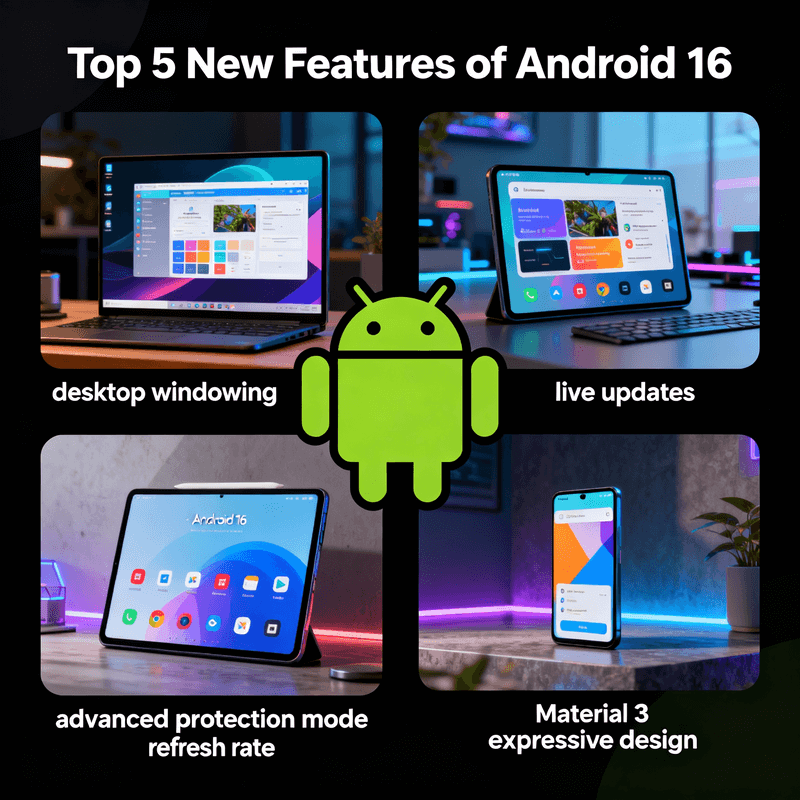
Android 16 introduces several significant improvements and new features that make the upgrade worthwhile for compatible devices:
Material 3 Expressive Design: A refreshed visual design language with more flexible and interactive elements
Live Updates: Real-time notifications for delivery tracking, ride-sharing, and other compatible apps without needing to open the applications
Enhanced Accessibility: Improved support for hearing aids with native control options and clearer calling capabilities
16KB Page Size Support: Enhanced performance improvements for system boot-up, app launches, and camera starts while reducing battery usage
Update Timeline and Availability
The Android 16 rollout began in June 2025, making it the earliest major Android release in recent years. Google Pixel devices received the update first, followed by Samsung’s One UI 8 rollout starting in September 2025. Other manufacturers are expected to release their Android 16 updates throughout the remainder of 2025 and into early 2026.
For users wondering about their device’s eligibility, the general rule is that smartphones released within the last 2-3 years from major manufacturers are likely to receive Android 16, provided they meet the minimum hardware requirements. However, the exact timeline depends on each manufacturer’s update schedule and regional availability.
Conclusion: Android 16 Compatible Devices
Android 16 represents a significant evolution over its predecessors, delivering improved performance, stronger security, and richer user experiences. In this post we list all Android 16 Compatible Devices. By raising the minimum hardware requirements, it ensures smoother multitasking and faster app launches on devices with at least 6 GB of RAM and 32 GB of storage. The introduction of Material 3’s expressive design language brings a more cohesive and visually engaging interface, while Live Updates keep you informed in real time without opening each app. Enhanced accessibility features—including native hearing-aid support and clearer call audio—make Android 16 more inclusive. Under the hood, support for larger 16 KB page sizes accelerates system start up and reduces battery drain. Whether you’re on a flagship Pixel, a premium Galaxy model, or a competitively priced Xiaomi device, upgrading to Android 16 means enjoying a faster, more reliable, and more personalized mobile experience.

